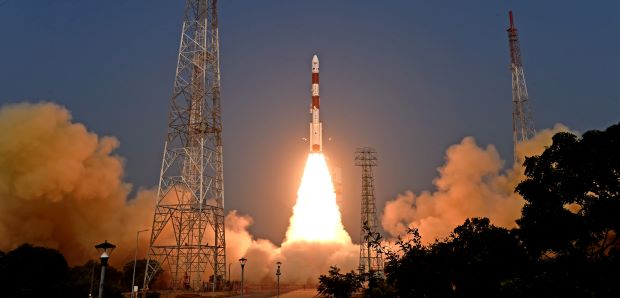Theme:
- ISRO successfully launched XPoSat in low Earth orbit on January 1, 2024. This marked a significant moment for India’s space programme, as it made India the second nation in the world, after the US, to have a dedicated observatory for studying astronomical sources like black holes and neutron stars through X-ray polarimetry.
What is XPoSat?
- XPoSat, short for X-ray Polarimeter Satellite, is India’s first polarimetry space mission, developed in collaboration between the Indian Space Research Organisation (ISRO) and the Raman Research Institute (RRI). XPoSat is designed to explore and study the various dynamics of intense astronomical X-ray sources in extreme conditions, which will be facilitated by two scientific payloads carried by the spacecraft while orbiting in a low-earth orbit.
Objectives of XPoSat:
- XPoSat aims to enhance our understanding of celestial bodies by using advanced scientific payloads, including the Polarimeter Instrument in X-rays (POLIX) and X-ray Spectroscopy and Timing (SPECT).
- Through these instruments, XPoSat seeks to measure polarimetry parameters and gather valuable timing and spectroscopic information within specified energy ranges, contributing to the broader field of astrophysics.
- Polarimetry parameters refer to the degree of polarization and the angle of polarization. These parameters help characterize how much and in which direction X-ray photons are polarized when emitted by celestial bodies.
- Timing and spectroscopic information refers to at what time the X-ray photons are emitted by the celestial bodies and the distribution of these X-ray photon energies in space. This data will help us figure out the timing patterns and understand what elements make up the celestial bodies, helping us learn more about space.
- The mission is expected to shed light on complex emission processes from astronomical sources, including black holes, neutron stars, active galactic nuclei, and pulsar wind nebulae.
Payload:
The satellite will carry two key scientific payloads:
- Polarimeter Instrument in X-rays (POLIX). POLIX is designed to measure polarimetry parameters like degree and angle of polarization in the medium X-ray energy range (8–30 keV).
- X-ray spectroscopy and timing (SPECT). SPECT will provide crucial timing and spectroscopic information within the energy range of 0.8–15 keV of X-ray photons.
- By combining polarimetric observations with spectroscopic and timing measurements, scientists expect to overcome the current limits in understanding how astronomical emissions work.
Conclusion:
XPoSat, with its advanced X-ray polarimetry techniques, has the potential to unlock profound insights into the dynamics of intense X-ray sources in space. The importance of XPoSat lies in its ability to contribute to the advancement of astrophysics. The data collected by XPoSat is expected to shed light on the behaviour and characteristics of astronomical objects, filling critical gaps in our knowledge. This, in turn, will deepen our understanding of the universe for the broader scientific community.
Furthermore, the XPoSat mission marks a significant milestone in India’s scientific journey. As the nation’s first dedicated polarimetry mission and the second country to undertake such an endeavour, it showcases India’s growing technological prowess and scientific ambition, demonstrating its commitment to space exploration. XPoSat’s success not only advances our understanding of the cosmos but also highlights India’s increasing prominence in the global scientific community.
Image: ISRO
Your Turn…
What are your thoughts on XPoSat? Express your views through the comment section below. Subscribe to our blog to read answers to the trending GD topics.
Copyright @ Group Discussion Ideas.

